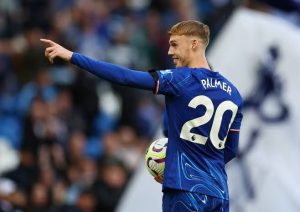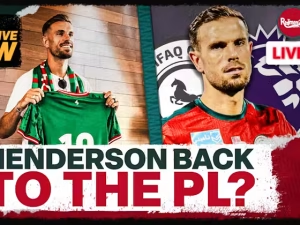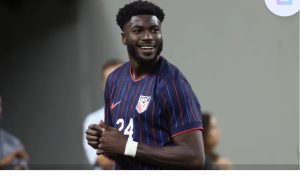
Mutual Interest Between the Dallas Cowboys and Amari Cooper
The NFL is a league of constant change, with rosters evolving as franchises seek the right combination of talent and chemistry to pursue championships. Few players have had the impact on a team’s offense that Amari Cooper had during his time with the Dallas Cowboys. Since his departure, speculation has continued about a potential reunion between Cooper and Dallas. As both sides navigate their respective futures, the notion of a mutual interest has gained attention. This essay examines the history, dynamics, and potential benefits of a renewed partnership between Amari Cooper and the Dallas Cowboys, highlighting why a reunion might be mutually beneficial.
**The Cowboys’ Need for a Reliable WR**
The Dallas Cowboys boast a potent offense, but it has experienced periods of inconsistency, especially when facing top-tier defenses. While CeeDee Lamb has ascended to elite status as the team’s primary receiver, Dallas has lacked consistent production from its WR2 and WR3 options. Michael Gallup, once a promising downfield threat, has struggled with injuries and inconsistency. Brandin Cooks, though experienced and capable, hasn’t consistently taken pressure off Lamb the way a top-tier WR2 might. This gap in the offense has left quarterback Dak Prescott without the security of multiple dependable targets.
Amari Cooper, known for his precise route running, sure hands, and ability to create separation, filled that void during his time in Dallas from 2018 to 2021. His presence allowed other receivers to thrive while keeping defenses honest. Since his departure, the offense has missed the steady, professional production he offered. Bringing Cooper back could reestablish offensive balance and efficiency, giving Dallas the kind of WR depth they need to compete deep into the playoffs.
**Amari Cooper’s Fit and Experience in Dallas**
Cooper’s familiarity with the Cowboys’ system and quarterback Dak Prescott is a significant advantage. During his tenure with Dallas, Cooper and Prescott developed a strong on-field rapport. Cooper’s arrival in 2018 immediately elevated Prescott’s play and stabilized a passing game that had been erratic following the departure of Dez Bryant and the retirement of Jason Witten.
Under offensive coordinator Kellen Moore, Cooper thrived, regularly posting 1,000-yard seasons and making the Pro Bowl. While Dallas has since moved on to a different coordinator and scheme under head coach Mike McCarthy, the fundamentals of the system still align with Cooper’s strengths—quick cuts, clean routes, and the ability to win one-on-one matchups. His previous success with the Cowboys offers a level of continuity that few other free agents or trade targets could replicate.
Furthermore, Cooper’s professionalism and low-profile demeanor matched well with the Cowboys’ locker room culture. Despite being a star, he never demanded excessive attention or drama. He was known for his work ethic, reliability, and ability to lead by example. For a team aiming to maintain focus and chemistry during a high-pressure playoff window, those traits remain invaluable.
**Amari Cooper’s Status with the Cleveland Browns**
After being traded to the Cleveland Browns in 2022 for a relatively low return—just a fifth-round pick—Cooper proved he remained a top-tier receiver. In 2022 and 2023, he posted back-to-back 1,000-yard seasons, even amid quarterback uncertainty and injuries in Cleveland. His 2023 campaign, featuring a career-high 1,250+ receiving yards, was a clear reminder of his elite ability.
However, Cooper is entering the final year of his contract with Cleveland and is due a significant salary—over \$20 million—without any guaranteed money left. The Browns, with their tight cap situation and need to invest in other areas (including an aging offensive line and defense), may be hesitant to extend him on a high-cost deal. This has led to speculation that Cooper could become available via trade or even released if contract talks stall.
From Cooper’s perspective, returning to a familiar environment in Dallas—where he experienced team success, personal accolades, and quarterback stability—could be appealing. Especially as he reaches his 30s, joining a contending team with a competent passer could be more attractive than remaining in a rebuilding or uncertain situation.
**Cowboys’ Cap Space and Roster Strategy**
One of the lingering concerns is Dallas’s cap flexibility. The team has been notoriously cautious about big spending under owner Jerry Jones and executive vice president Stephen Jones. However, with Prescott, Lamb, and Micah Parsons all due for large contract extensions, the Cowboys need to be strategic with how they spend in the short term.
That said, acquiring Cooper via trade or signing him if released would be a calculated move rather than a financial gamble. If Cleveland releases him, Dallas could negotiate a cap-friendly, incentive-laden deal that rewards Cooper for production without compromising their cap future. Given Cooper’s value and familiarity with the organization, it’s likely he would be open to returning on such terms, especially if it meant competing for a championship.
The Cowboys have not hesitated to reunite with former players when it makes football and financial sense. Just in recent years, they’ve brought back players like Rolando McClain, Anthony Hitchens, and even Jason Witten (post-retirement). Cooper’s situation aligns well with this pattern—still productive, familiar with the system, and potentially undervalued in the open market.
**Locker Room Chemistry and Leadership**
In addition to on-field production, Cooper would also provide leadership to a relatively young WR corps. While Lamb is the undeniable WR1, and Cooks adds veteran presence, Cooper brings the experience of being a true No. 1 receiver in multiple systems and under various levels of pressure. His even-keeled demeanor and dedication to preparation would provide a model for young players like Jalen Tolbert and any new draftees.
Furthermore, Cooper’s return could reduce the offensive burden on Lamb, allowing the Cowboys to move him around more freely and scheme up mismatches. With Cooper drawing coverage attention, Lamb could operate out of the slot or find more one-on-one situations—something that defenses are reluctant to give him when he’s the lone elite threat.
**Conclusion: A Reunion That Makes Sense**
Mutual interest between the Dallas Cowboys and Amari Cooper isn’t just about nostalgia—it’s about fit, familiarity, and strategic alignment. For the Cowboys, bringing Cooper back would address a clear need, elevate the offense, and do so with minimal risk given the known chemistry and production. For Cooper, Dallas offers a competitive roster, an elite quarterback, and a system he knows well.
In an NFL where winning windows can close quickly, reunions like this can provide the missing piece for a championship run. If the financial terms align and the Browns choose to move on, both Cooper and the Cowboys have strong reasons to make this reunion a reality. As the offseason progresses, fans and analysts alike will be watching closely—because sometimes, the best way forward is a return to where it all clicked.







